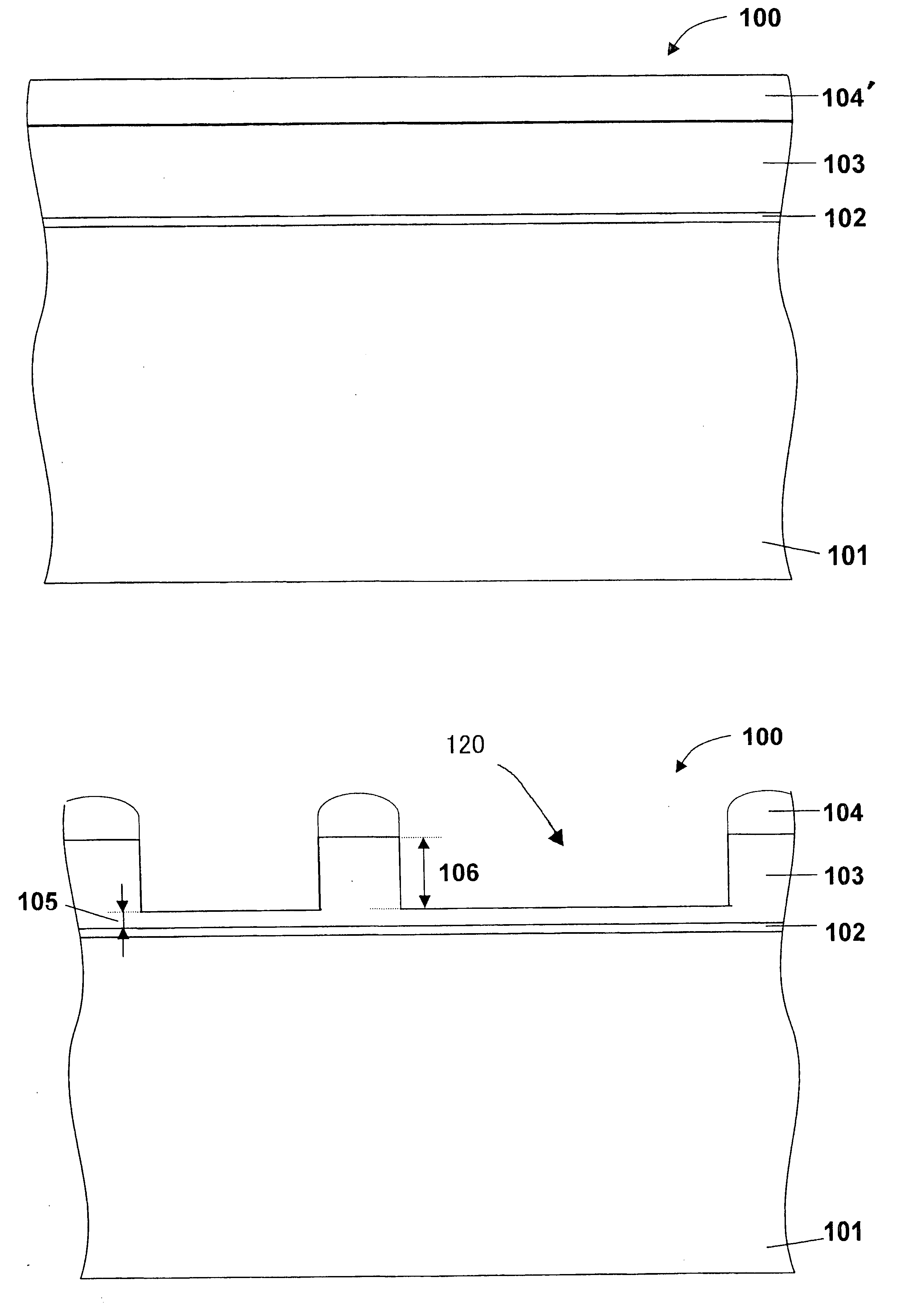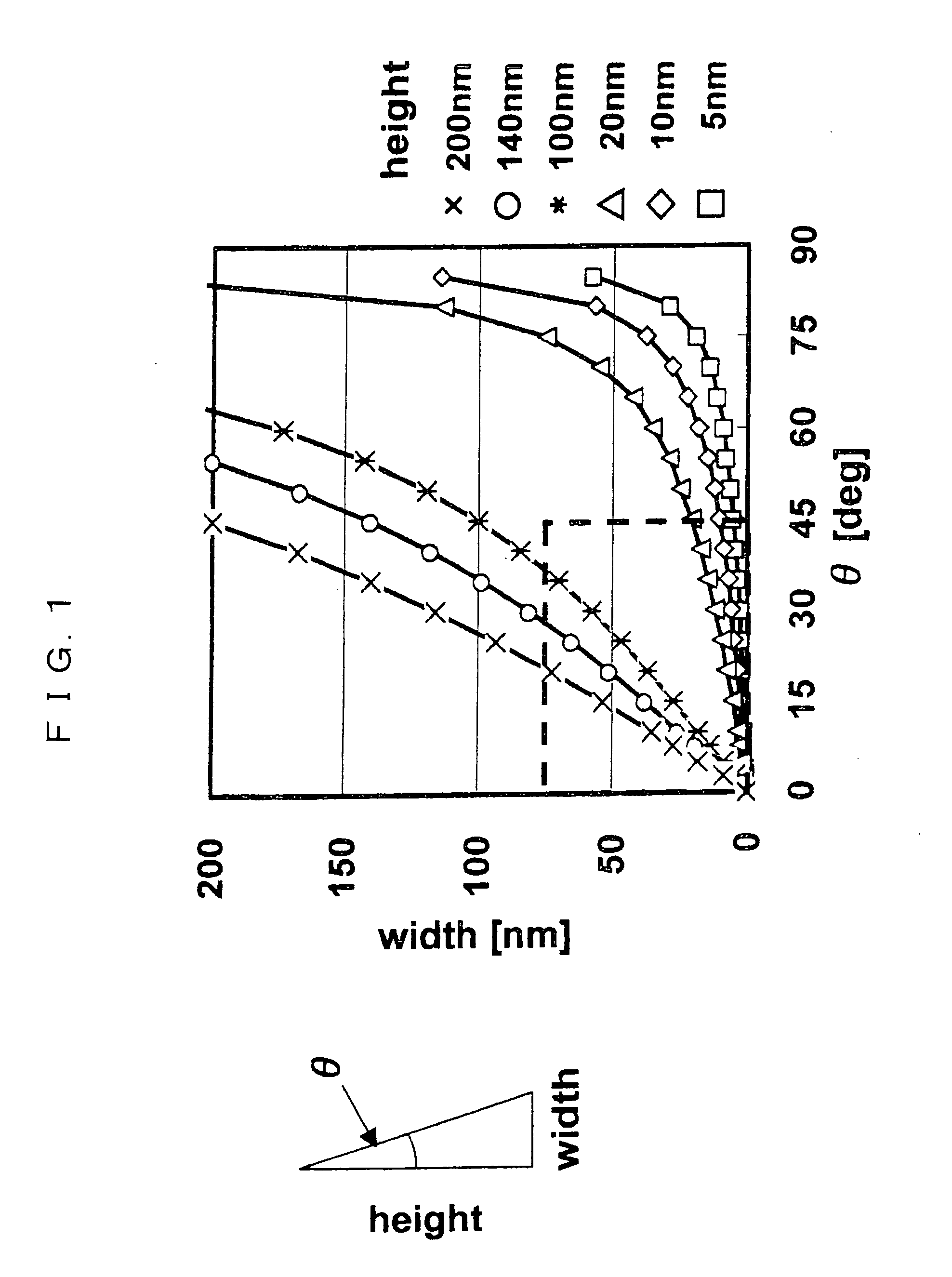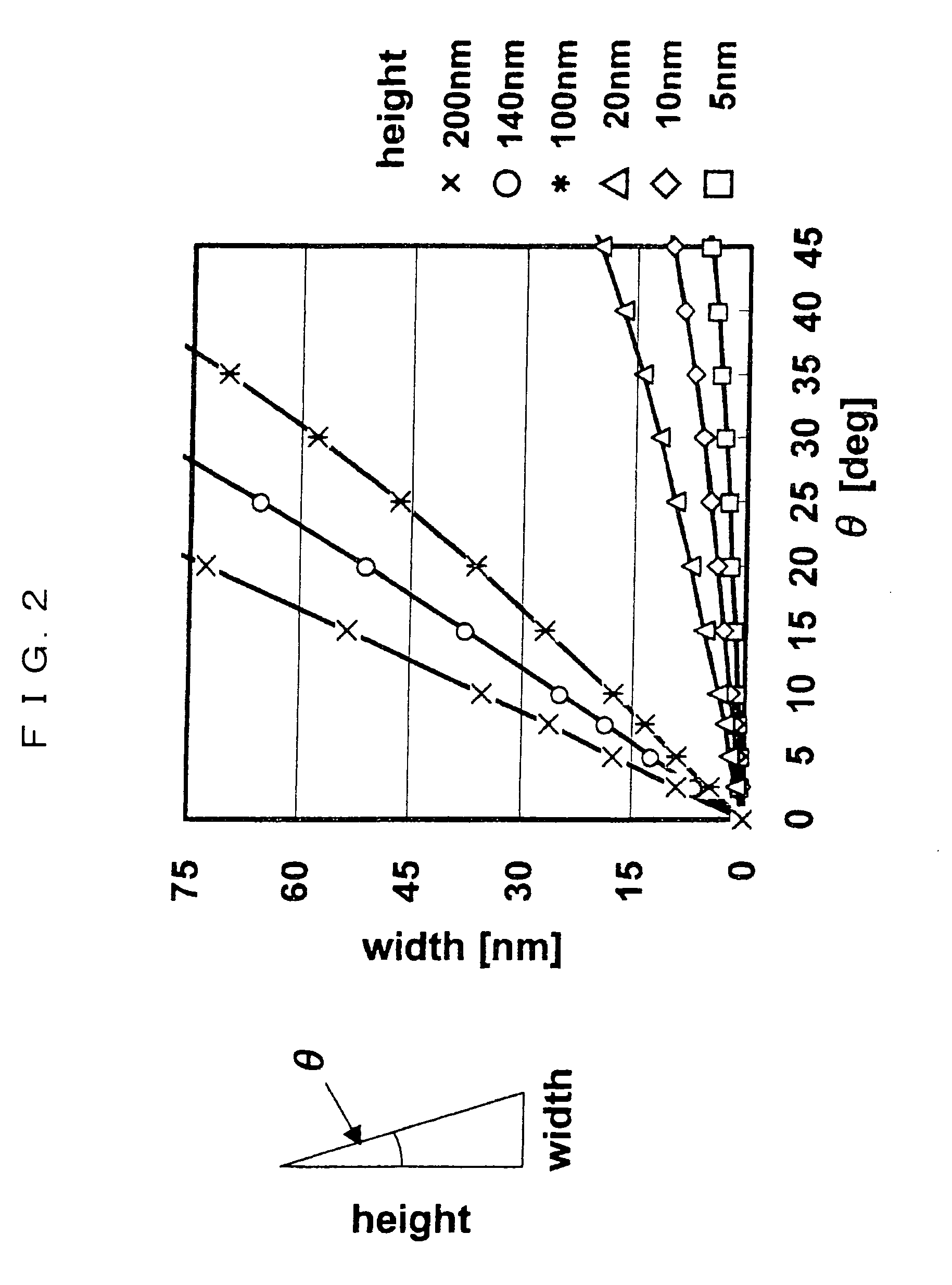Manufacturing method of semiconductor device
a manufacturing method and semiconductor technology, applied in semiconductor/solid-state device manufacturing, basic electric elements, electric devices, etc., can solve the problems of unstable shape of the removal preventing film formed on the side wall at the time of etching, and achieve the effect of reducing the above variation and high accuracy
- Summary
- Abstract
- Description
- Claims
- Application Information
AI Technical Summary
Benefits of technology
Problems solved by technology
Method used
Image
Examples
first embodiment
[0076] The first embodiment will be described with reference to FIGS. 3 to 8. First, at a step 1 shown in FIG. 3, a silicon oxide film (first film) 102 having thickness of 8 nm to 20 nm is formed on a p-type single-crystal silicon substrate (semiconductor substrate) 101 in a chamber atmosphere 100 by a thermal oxidation method. Then, a silicon nitride film (second film) 103 having thickness of 100 to 200 nm is deposited on the silicon oxide film 102 by a CVD method (vacuum pressure CVD method, plasma CVD method, high-density plasma CVD method, normal-pressure CVD method, or atomic layer deposition CVD method). Then, a photosensitive film (resist film) is coated onto the silicon nitride film 103 and performs patterning at exposing and developing steps to form a resist 104′ that defines an element isolation region. At this time, in order to reduce reflected light at the time of lithography, a reflection reducing film may be deposited between the silicon nitride film 103 and the photos...
second embodiment
[0093] A second embodiment of the present invention will be described with reference to FIGS. 9 and 10. In addition, in FIGS. 9 and 10, the reference numeral 200 designates a chamber atmosphere, the reference numeral 201 designates a silicon substrate, the reference numeral 202 designates a silicon oxide film, the reference numeral 203 designates a silicon nitride film, the reference numeral 203a designates a projecting part of the silicon nitride film 203, the reference numeral 204 designates a resist pattern, the reference numeral 205 designates a residual film of the silicon nitride film 203, the reference numeral 206 designates an etching amount of the silicon nitride film 203, the reference numerals 209 and 211 designate projection amounts of the projecting part 203a, the reference numeral 217 designates a second removal preventing film, the reference numeral 212 designates a taper angle of the second removal preventing film 217, the reference numeral 220 designates an opening,...
third embodiment
[0106] A third embodiment of the present invention will be described with reference to FIGS. 12 to 17. In addition, in FIGS. 12 to 17, the reference numeral 300 designates a chamber atmosphere, the reference numeral 301 designates a silicon substrate, the reference numeral 302 designates a silicon oxide film, the reference numeral 303 designates a silicon nitride film, and the reference numeral 304 designates a resist pattern.
[0107] A step 1 shown in FIG. 12 is similar to the step 1 (FIG. 3) in the first embodiment. Then, in step 2 shown in FIG. 13, a resist pattern 304 is formed so as to correspond to an element isolation region using a photolithography technique and then, the silicon nitride film 303 is etched away by anisotropic etching using the resist pattern 304 as a mask to form an opening in the silicon nitride film 303. In a step for etching the silicon nitride film 303, dry etching is performed using a mixture gas of CHF3 / CF4 / Ar / O2 until the silicon oxide film 302 of the ...
PUM
 Login to View More
Login to View More Abstract
Description
Claims
Application Information
 Login to View More
Login to View More - R&D
- Intellectual Property
- Life Sciences
- Materials
- Tech Scout
- Unparalleled Data Quality
- Higher Quality Content
- 60% Fewer Hallucinations
Browse by: Latest US Patents, China's latest patents, Technical Efficacy Thesaurus, Application Domain, Technology Topic, Popular Technical Reports.
© 2025 PatSnap. All rights reserved.Legal|Privacy policy|Modern Slavery Act Transparency Statement|Sitemap|About US| Contact US: help@patsnap.com



